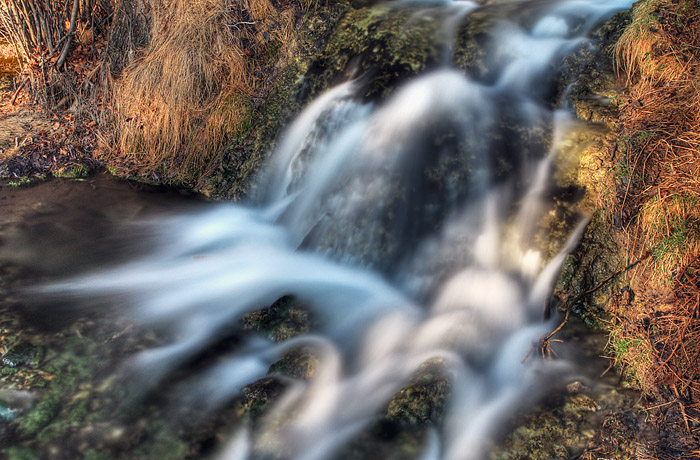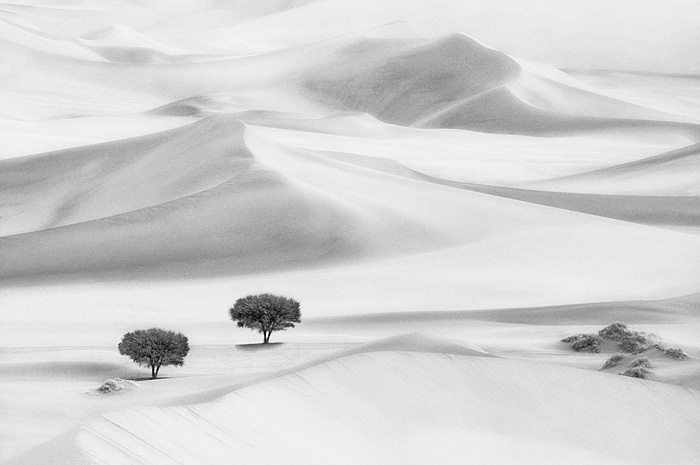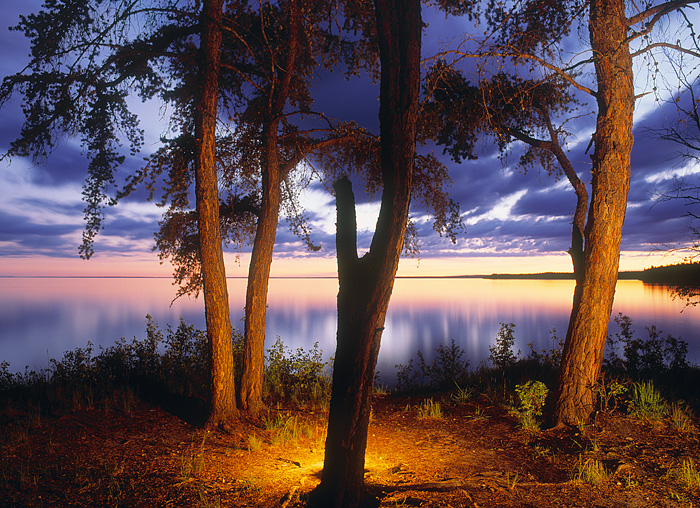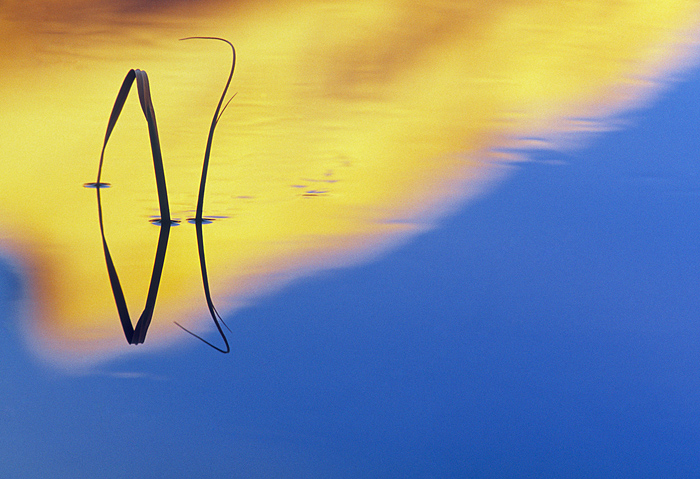An interview with photographer Darwin Wiggett

Horseshoe Lake, Jasper NP © Darwin Wiggett
Recently, I had the opportunity to have a brief Q&A session with Darwin Wiggett. Darwin is one of the most notable photographers out there today. Not only because of his incredible body of work, but also his many written articles online and in photography magazines, giving insight into the way he views the art. If you aren’t familiar with his work, please have a look at this page, which links to a few of the online articles he has written.
When I started this blog, I had many ideas on articles I wanted to write. These included essays on photography as an art form, where the boundaries lie between digital image enhancement and image manipulation, how to expand your creativity, and the philosophy of photography (just to name a few). After reading a few of Darwin’s articles, I realized that not only did he cover all the ground I wanted to cover in a more articulate way than I could have, but I also learned some things and gained more understanding on these subjects.
Although his photos are awe-inspiring and world-class, I think one of the main reasons for Darwin’s success is his personality, which shows through his images and writings. Let’s face it, a lot of photographers out there don’t offer much insight into their artistic side beyond their actual image portfolio. That’s where Darwin separates himself from the pack. And even without his writings, the plethora of diverse photographs in his galleries express themselves ten-fold. If a picture speaks a thousand words, Darwin’s pics are in the 6-digit range…

Darwin shooting in Banff ©Bill Smith
MD: So, it’s December right now… What’s the weather been like up there in your neck of the woods?
DW: Well… it has been between -30 and -40 degrees celcius for the last five days and I feel like a hibernating bear. All I want to do is eat and sleep. But it may rise above freezing in the next few days as a Chinook rolls in. I am itching to get out and shoot after being stuck in the office for awhile.
MD: Alright, you come from a Biology background. That’s something a lot of outdoor/nature photographers including myself can identify with. Did you always have an interest in nature, or did it come later in life?
DW: When I was really young, I wanted to be Grizzly Adams and live in a log cabin with my pet grizzly bear and a couple of wolves. Later I wanted to be Jane Goodall and live with the Chimpanzees. As long as I can remember all I wanted to do was hang out with animals. As a young boy around 5 or 6 I would just go out by myself and walk in the woods and sit down and just look around at everything. I remember a bird landing on my shoulder after I sat still for a long time. I was thrilled and wanted experiences like that everyday. When I was in high school I was an expert in Black Powder guns, I did Taxidermy and was a wilderness survivalist–I wanted to be a modern day mountain man (I was not too popular with the girls as you can imagine!). My hunting days ended the day I shot my first big game (an antelope). I just felt really bad for the animal. I was a confirmed bleeding heart after that and I put away my gun and picked up binoculars instead.

Big Hill Springs Provincial Park © Darwin Wiggett
MD: When did you decide that you’d rather pursue photography than continue on with a career in Biology?
DW: When I got a camera in 1986 to take photos of my research, I instantly realized that making images was an easier way to share my experiences than was talking or writing or doing biological research. I was insanely shy but a photo could speak for me when I couldn’t. Plus there were no jobs in boilogy when I graduated in 1989 so I naively thought I might as well try to sell nature photos. If I really knew what it took to do this full time, I probably would not have chosen the occupation.
MD: A lot of pros out there still have another line of work they supplement their photography-related income with… What was the most difficult part of the process in establishing yourself as a professional?
DW: The most difficult part for me was (and is) learning to be a business man and marketer– the two things that do not interest me at all but the two things that are critical to make a living at photograph. In fact you can be an average photographer but make a great living if you are talented at marketing. But if you are a creative genius of a photographer but a crappy marketer, you likely die of starvation.

Namibia, Africa © Darwin Wiggett
MD: You have really established yourself as an authority on photographing the Canadian Rockies. Are there any other locations out there that you know as well, or mean as much to you as the Rockies?DW: the badlands and prairies of Alberta I know as intimately as the mountains. I am as much a prairie boy as I am a mountain man. I love the priaires for the big sky and sense of space.

Water Valley, Alberta © Darwin Wiggett
MD: What separates your method of running photo workshops from the way a lot of other pros run theirs?
DW: Most photo tours have a set itinerary, with planned stops and a planned agenda. My tours are based out of a centrally located wilderness lodge in an area less frequented by photographers but also close to Banff and Jasper National Parks. I take people to spots they probably would not find on their own. I know the area so well that no matter what the light or the weather I know a place that will look great given the conditions. There is no agenda except to get photographers in the best spots in the right light. We go hard and focus on spending time all our time in the field making the best photos possible. These tours are like a boot camp for photographers. Although not politically correct, one lady dubbed the tours “the go hard, retard photo tours”
MD: Of all the places you’ve traveled for photography, what is your absolute favorite?
DW: I am happy no matter where I am as long as I have a camera in my hand.There is stuff to be found anywhere as long as you are open to seeing Many photographers are surprisingly closed about the beauty around them). I have been as excited shooting trash in a parking lot as I have been photographing grizzly bears in the wild. It is all about being open and leaving your expectations behind. Too many photographers think in terms of subjects and their subjective relationships with this subjects. We need to see without bias and without labels to really begin to transform into artists.

Snow @ Big Hill Springs © Darwin Wiggett
MD: What places on earth that you haven’t yet been to are on your “to-photograph” life list?
DW: I am no longer a trophy hunter with a life-list of places to go. There is great beauty in my own backyard and I think learning to photograph the everyday and the ‘mundane’ will make you a better photographer than constantly trying to go to new and exotic locals. Depth comes from immersion and not from a shallow two week whirlwind tour. The best photographs I see are from people that immerse themselves into a location they love. I love Canada, I live in Canada and so I plan to photograph my country. Canada excites me as much as any foreign local I have been to. Why not know your homeland?

Kathmandu, Nepal © Darwin Wiggett
MD: You use grad ND filters quite a bit in your landscape work. Many serious landscape photographers out there have adopted digital layer blending of two exposures (not necessarily HDR) as opposed to using a filter system. Do you use digital blending in place of GNDs at times? What do you think the advantages and disadvantages of each method are?
DW: I use whatever tool I need to get the shot I want whether that requires a grad, a hand blend or an HDR composite. Sometimes I use a combo of all three. I use whatever method gives me the result I like best but in the shortest amount of time. I prefer to capture in-camera whenever I can so I often reach for a grad first. If they won’t work a hand blend is my second choice, HDR is my last choice.
MD: Do you you still occasionally use medium and large format film cameras?DW: I still own and use a Linhoff 6×12 roll film camera. Nothing beats seeing a fine Fujichrome Velvia pano slide on the light table.

Cold Lake, Saskatchewan © Darwin Wiggett
MD: You have written articles and been very outspoken on your philosophy of photography as an art form and how post-processing techniques can be an important part of the image. Why do you think so-called ‘purists’ still condemn the idea of working on images in post-processing?
DW: Purists, especially nature photographers, think of photography not as art but as a document. Post-processing to them seems like blasphemy, like they are altering reality. Post-processing gets my image closer to the way I saw and experienced the scene, it helps me present what I FELT when I took the photo. My photos document how I see the world… not how the world is… none of us can present that ‘truth, so why fight it? Art is expression, the means we use to express what we see is with the camera; any tool that lets you be true to your expression is a good tool to use.

Vermillion Lakes, Banff © Darwin Wiggett
MD: Who’s photography has impressed or inspired you recently?DW: The web is full of great photography, I am really impressed by the stuff I see submitted to my blog photo contest and the stuff I see on photo forums. It is often too bad that some photographers get in ruts where they reject others work if it is not like theirs. The more open we are to all genres of art and photography, the more we will grow as artists. As soon as you develop a style that is recognizable, you’ll think you have arrived. But if you just repeat past successes, you’ll stagnate. The best artists constantly evolve. Always try new ideas, new techniques, new equipment, break the rules, stop judging others, push yourself. Life is a journey, enjoy the trip, it a great ride.


Комментариев нет:
Отправить комментарий